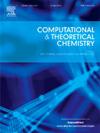Aluminum clusters graphene supported a DFT-based genetic algorithm study
IF 3
3区 化学
Q3 CHEMISTRY, PHYSICAL
引用次数: 0
Abstract
Genetic Algorithm (GA) in conjunction with Density Functional Theory (DFT) was implemented to optimize the geometric configurations of aluminum clusters (Aln, n = 3–40). GA efficiently explored the configurational space by evolving randomly generated initial structures through selection, crossover, and mutation, yielding energetically metal clusters. Subsequently, DFT was employed to relax these structures, ensuring the precise determination of the most stable geometries. The results showed that the binding energy per aluminum atom increased progressively with cluster size, approaching values close to that of bulk aluminum for large clusters. Notably, clusters with fewer atoms (Aln, n = 3–9) displayed diverse and irregular geometries, while larger clusters (Aln, n = 10–40) exhibited defined and stable configurations. Additionally, the obtained aluminum clusters were supported on defected graphene surfaces, undergoing structural rearrangements while maintaining their energetic stability. These results highlight the influence of surface interactions on the minimum energy configurations. This study demonstrates the robust capabilities of the combined GA-DFT approach for predicting structural and energetic properties of metal clusters, offering valuable insights for applications in catalysis and materials science.

求助全文
约1分钟内获得全文
求助全文
来源期刊

Computational and Theoretical Chemistry
CHEMISTRY, PHYSICAL-
CiteScore
4.20
自引率
10.70%
发文量
331
审稿时长
31 days
期刊介绍:
Computational and Theoretical Chemistry publishes high quality, original reports of significance in computational and theoretical chemistry including those that deal with problems of structure, properties, energetics, weak interactions, reaction mechanisms, catalysis, and reaction rates involving atoms, molecules, clusters, surfaces, and bulk matter.
 求助内容:
求助内容: 应助结果提醒方式:
应助结果提醒方式:


